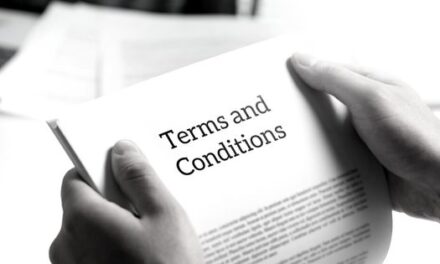What sets a great website apart from the rest? You know, the kind that gets you hooked right from the start and then keeps you scrolling for hours.
It could be a well-designed landing page or a great user experience; after all, who doesn’t like a stunning website that’s easy to navigate? However, if you take a closer look at what really keeps readers engaged, you’ll realize it has more to do with content.

Sure, aesthetics and interface play an important role but there would be little value in them if your content didn’t entertain, educate, and inform your readers.
So, is writing creative content difficult? Not always. Having the right keywords by your side will make a world of difference for anyone learning how to write website content.
In this digital content guide, we’ll explore how keyword discovery can be a complete game-changer for producing effective content that your readers will love.
Why Do Keywords Matter?
A good foundation is key for building just about anything, especially content. With the help of the focus keywords, you can create that structure for your articles and blog posts. Aside from improving your rankings with search engines, keywords serve as a compass, giving your content the direction it needs.
The topics that you can write about, the interests of your readers, and the services you provide — all of this becomes clearer with the help of keyword discovery.
In short, you can use keywords to:
- Identify what your customers are looking for
- Choose relevant topics to talk about
- Structure and organize your content
Using Your Keywords Correctly
Not a long time ago, all you had to do was “stuff” your website with keywords and you’d make it to the top of search engine results. Today, that sort of thing will do you more harm than good.
Google has gotten smarter at analyzing content and its relevance to the keywords that you use. That said, your first priority should be writing kickass content. This means you’ll need a lot more than just using the Yoast focus keyword feature and calling it a day.
As for using your keywords correctly, a general rule of thumb is to space them out over your content and avoid forcefully fitting them in. Keywords aren’t only limited to the main body of text and you should look for opportunities to use them naturally in:
- Titles
- Headings
- Introduction
- Summary/Conclusion
- Meta description
- Page URLs
Give Your Content the Boost It Needs
To create valuable content, you need to first know what your customers are looking for. This is where keyword research comes to the rescue.
With the right tools, you can discover the most commonly used keywords about any given topic. From short phrases to simple words and even long sentences — finding the right keywords is a stepping stone to the production of creative content.
While keyword discovery isn’t rocket science, bringing in the professionals is usually the most efficient route to take on your way to getting great results.
Find Relevant Topics to Talk About
If you’re new to keyword research, a good place to start is by creating a list of topics that are relevant to your business.
Let’s say you found a bunch of keywords that are used by your customers frequently. Instead of using each and every one of them, pick out the ones which fit your business and the services you provide.
This way you’ll be able to come up with topics that:
- Provide information that helps to solve your readers’ problems
- Let them know that you have the necessary solutions in the form of products or services
Match Your Reader’s Intent
So we’ve discussed the importance of user-focused content and keyword research, but how exactly do we pinpoint what your readers want?
Simply having a list of keywords isn’t enough; dig a little deeper into your selected keywords and you’ll start noticing a pattern of intent.
For example, if someone looks up the name of a product, it could mean that they’re only looking for information. But if they look for a review of that product, their intent becomes clearer — they’re more likely to buy. If they actually use a term such as buy, coupon or price, they probably have their credit card out and are ready to make a purchase now.
If you happen to sell the product they’re looking for, it’s a win-win situation. The key is to match your content with the reader’s intent.
What you write about will not only be useful to your customers but will also tell search engines and readers alike how your product or service is a perfect match to their search query.
The Next Step: Creating a Structure
Once you have a list of relevant keywords, you may begin creating a structure for your content.
It doesn’t have to be over-the-top detailed or in-depth. The idea is to create a layout that improves the readability of your content, breaking it down into bite-sized chunks that can be consumed with ease. Here are some noteworthy elements of a solid content structure.
Start Off Strong
Your readers are going to browse through a number of websites till they find what they’re looking for. To reel them in (and to keep them there), you’ll need an introduction that hits home.
When written well, a great introduction will tell your readers what they’re about to read without giving away everything at once. You can start off with a powerful opening line and then move on by briefly addressing the purpose of your article.
As long as your content is unique, engaging, and informative, you’ll do just fine. You can read my article on how to write blog posts if you’re new to the world of creative content writing.
Tell a Story (Use Examples)
When you’re writing well over a thousand words, things can get boring quickly. Sentences tend to get drawn out and words quickly lose their meaning after having been repeated so many times.
The good news? You’re not the first, and you definitely won’t be the last.
A good way to break out of the monotony is by using examples or perhaps sharing your own experience. By adding a personal touch, your content is much more believable and engaging –– something your readers will duly appreciate.
Another trick is writing shorter sentences and paragraphs. You’ll notice that I tend to use 2-3 sentences for each paragraph. They’re easier to read and get the point across more easily.
End on the Right Note
You’ll be surprised at how many well-written blog posts skip out on a conclusion or a summary. It’s almost like running a marathon and quitting right before you reach the finish line.
Sounds frustrating? Imagine how your readers must feel.
Writing a summary or conclusion is just as necessary as an introduction. It refreshes the reader’s memory and outlines everything they should take away from your content. Think of it as a way of coming full circle –– without it, your content is incomplete.
Keyword Discovery: Helping You to Create More Valuable Content
Content doesn’t have to be fancy or complex, but it does need to serve a purpose. While it’s easy to lose track of things when there’s so much to say, keywords help to put things in perspective.
Simplicity is something that many writers and website owners fail to include in their digital content strategy. The goal of writing content is not to display your knowledge or expertise, it is to change the way your readers think and to solve their problems.
At the end of the day, remember who you’re writing for and what their needs are –– it will pay off.




















